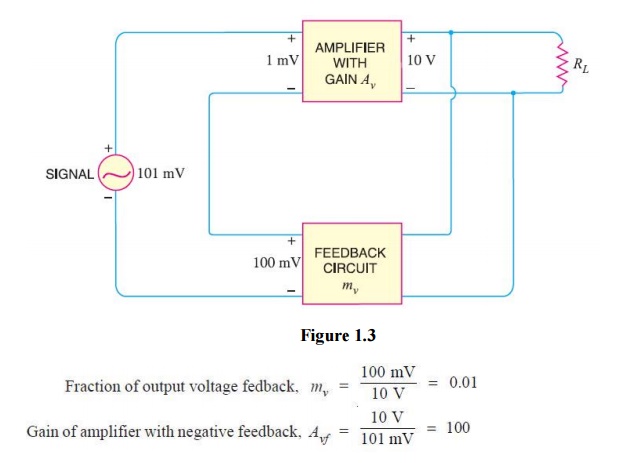A feedback amplifier has two parts viz an amplifier and a feedback circuit. The feedback circuit usually consists of resistors and returns a fraction of output energy back to the input. Fig. 1.3 *shows the principles of negative voltage feedback in an amplifier. Typical values have been assumed to make the treatment more illustrative. The output of the amplifier is 10 V. The fraction mv of this output i.e. 100 mV is fedback to the input where it is applied in series with the input signal of 101 mV. As the feedback is negative, therefore, only 1 mV appears at the input terminals of the amplifier. Referring to Fig. 1.3, we have, Gain of amplifier without feedback,


The following points are worth noting :
ü When negative voltage feedback is applied, the gain of the amplifier is reduced. Thus, the gain of above amplifier without feedback is 10,000 whereas with negative feedback, it is only 100.
ü When negative voltage feedback is employed, the voltage actually applied to the amplifier is extremely small. In this case, the signal voltage is 101 mV and the negative feedback is 100 mV so that voltage applied at the input of the amplifier is only 1 mV.
ü In a negative voltage feedback circuit, the feedback fraction mv is always between 0 and 1.
ü The gain with feedback is sometimes called closed-loop gain while the gain without feedback is called open-loop gain. These terms come from the fact that amplifier and feedback circuits form a ―loop‖. When the loop is ―opened‖ by disconnecting the feedback circuit from the input, the amplifier's gain is Av, the ―open-loop‖ gain.
When the loop is ―closed‖ by connecting the feedback circuit, the gain decreases to Avf , the ―closed-loop‖ gain.

